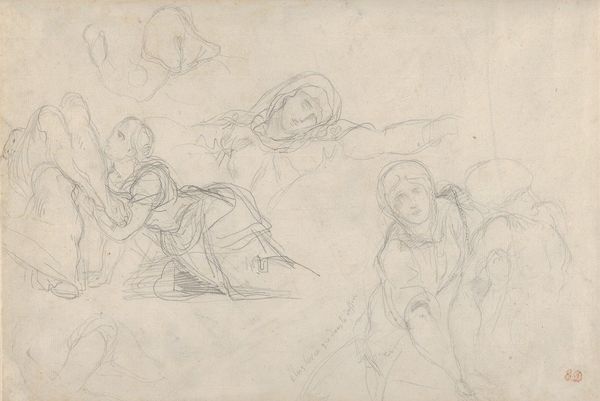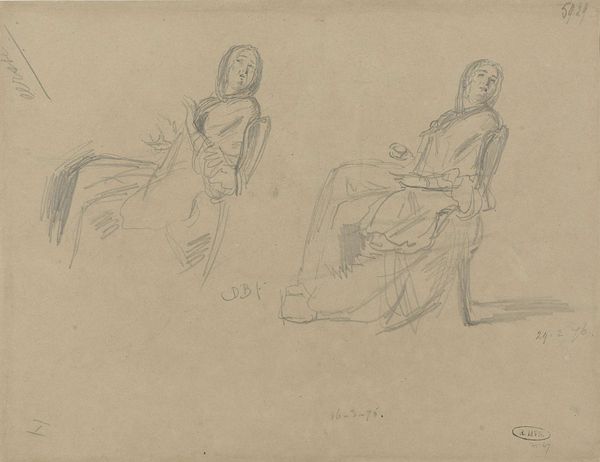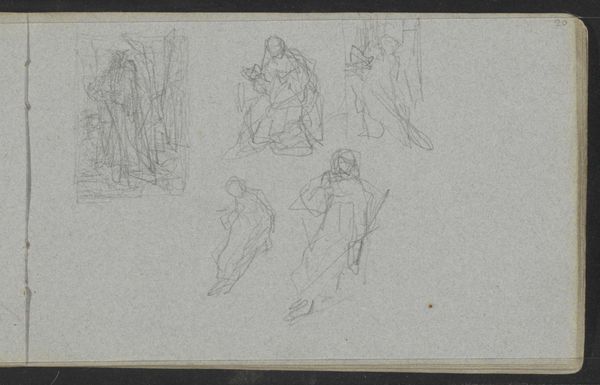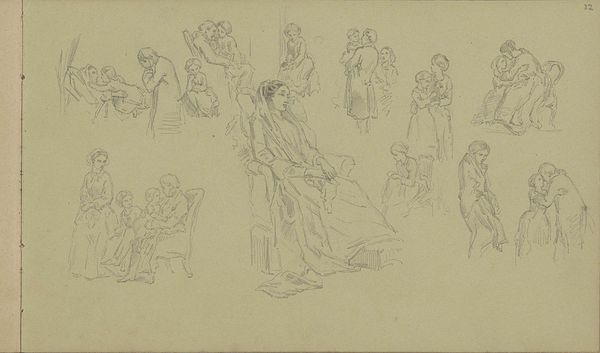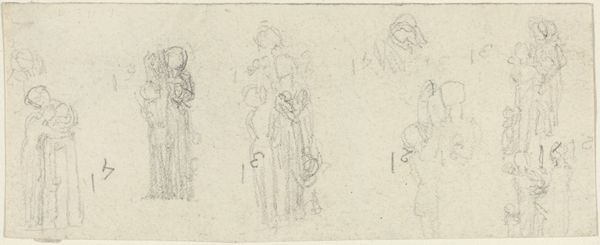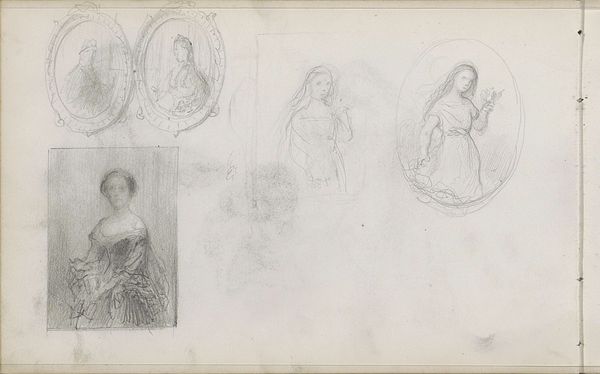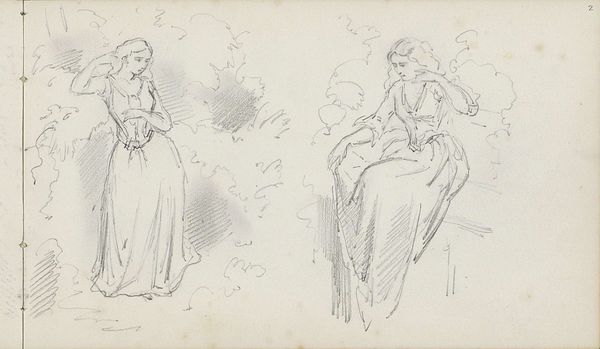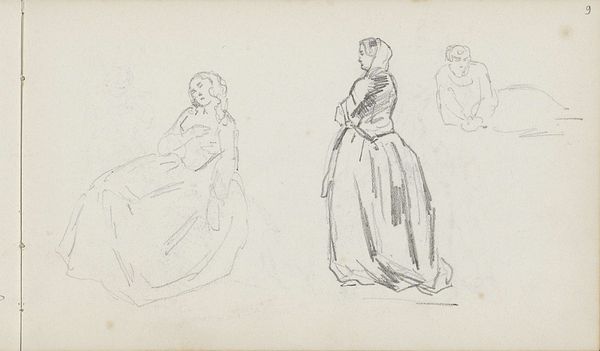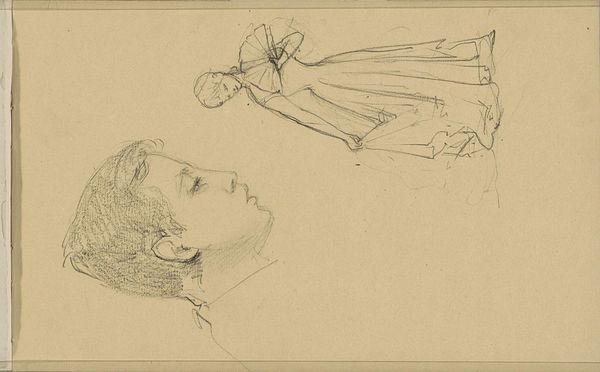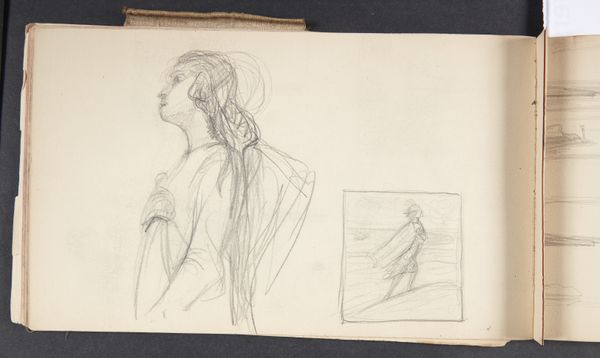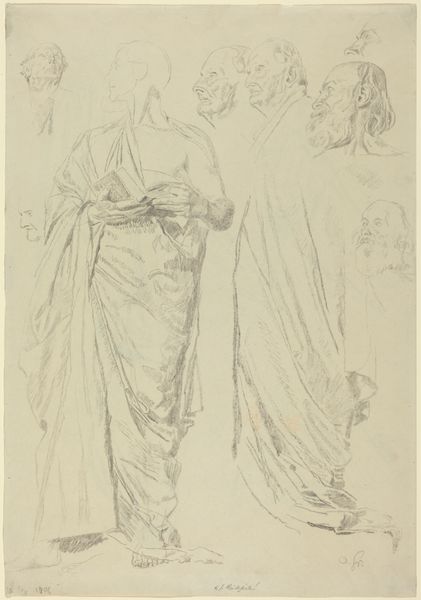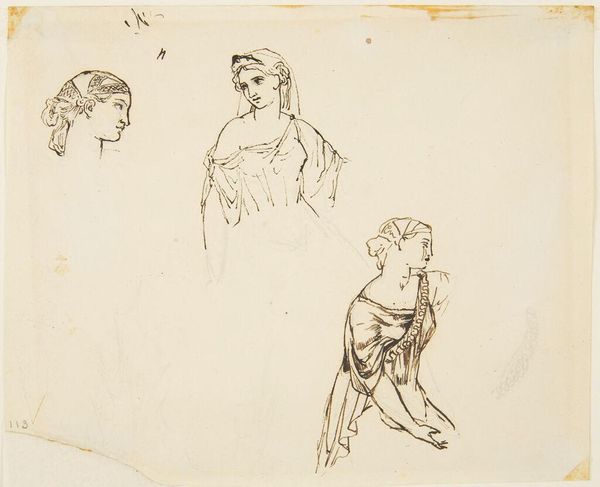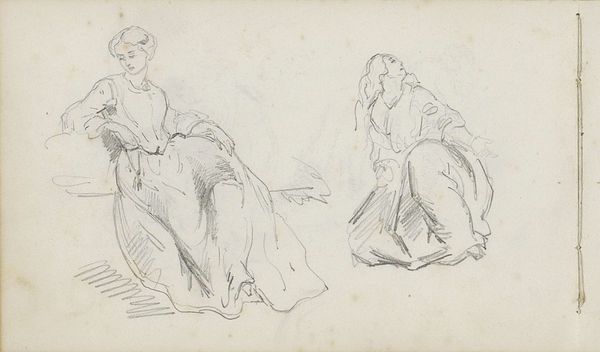
drawing, paper, pencil
#
portrait
#
drawing
#
light pencil work
#
incomplete sketchy
#
figuration
#
paper
#
personal sketchbook
#
idea generation sketch
#
sketchwork
#
character sketch
#
pen-ink sketch
#
pencil
#
sketchbook drawing
#
history-painting
#
academic-art
#
sketchbook art
#
initial sketch
Dimensions: height 117 mm, width 188 mm
Copyright: Rijks Museum: Open Domain
Editor: Here we have Johannes Bosboom's "Studies van vrouwen en een heiligenbeeld," created sometime between 1827 and 1891. It’s a pencil drawing on paper. There’s a really interesting sketchy quality to it; it feels like we're looking at a personal sketchbook page, capturing fleeting ideas. What do you make of this, looking at it from your perspective? Curator: The sketch book provides fascinating insight to how the artwork’s cultural narrative intersects with the artist's world. Considering Bosboom’s broader interest in religious architecture, this sketch is not simply an aesthetic study, but rather an exploration of faith and social identity as rendered and consumed within Dutch society. Editor: An exploration of faith, could you elaborate more about this idea? Curator: Bosboom’s choice to sketch women alongside religious iconography may reflect 19th-century Dutch society's evolving attitudes toward gender roles within faith and society. How do women engage with or embody the prevailing religious atmosphere? It shows a society attempting to align evolving societal norms with enduring religious customs. This mirrors larger cultural debates. Editor: It’s interesting you mention gender roles and faith in that era, because in relation to his other pieces, I was not necessarily inclined to perceive it that way at first. I was instead fixated on his capturing a snapshot in time. Curator: That focus on capturing a snapshot is definitely still important as it serves as a tangible document for what and who was socially revered. The sketch also makes us question the public's relation to its cultural artifacts and their connection with gender, class, and institutional power. It offers a compelling window into the era's visual culture and ideology. Editor: It makes so much more sense now to think of his artwork through both historical and social factors rather than just a composition practice, shedding light on how deeply intertwined art is with public life. Curator: Absolutely, looking at it this way provides additional ways of viewing art and appreciating it from various point of views!
Comments
No comments
Be the first to comment and join the conversation on the ultimate creative platform.
